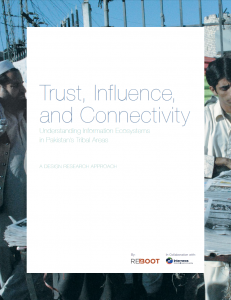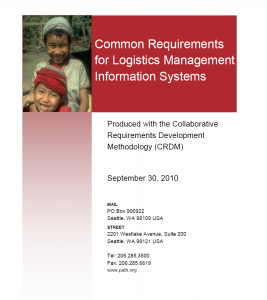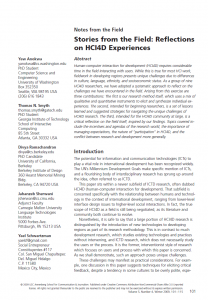Case studies provide compelling examples that show us what works and, just as importantly, what doesn’t work in practice. Several organizations have graciously shared their own experiences and learning from using Design with the User methodologies in ICT4D activities.
Internews
Internews was kind enough to provide “Trust, Influence, and Connectivity” detailing key design lessons in understanding information ecosystems in Pakistan’s tribal areas:
Recognizing the potential of design research to reveal the causes, relationships, and human dimensions of complex contexts—and to translate this knowledge into innovative, context-appropriate interventions— Internews partnered with Reboot, a social enterprise working to improve governance and development worldwide. Internews and Reboot conducted a design research investigation in Fall 2012. Using applied ethnography, researchers explored the information needs and behaviors of residents across diverse communities in FATA. Research sites in neighboring Khyber Pakhtunkhwa were included to provide a culturally similar extension of the research area.
This report, the result of that investigation, offers
a fresh perspective on the information and media landscape in FATA. It presents insights into the human impacts of information challenges and articulates opportunities to design development programming. By bringing a ground-level, human understanding to the complex dynamics of conflict in the region, this report seeks to supplement other analyses conducted through geopolitical, historical, or security lenses.
VillageReach
VillageReach, working in partnership with PATH, has used the Common Requirements Development Methodology (CRDM) to create better logistics management information systems in Zambia and Tanzania, resulting in a global platform that can be adapted worldwide with reduced duplication of resources. The CDRM document and Zambia case study are provided below:
Common Requirements for Logistics Management Information Systems: PATH conducted a landscape analysis of the peer-reviewed and grey literature to identify examples, methods, and models for developing user requirements in global health applications. PATH also interviewed global health information system experts to discover any existing user requirements processes not covered in the literature that could be used to inform the development of common user requirements.
The result of this landscape review showed that the work of the Public Health Informatics Institute represented the most mature methodology with ten years of US-based public health informatics experience in user-driven design. The PATH/Institute partnership lead to the adaptation of what is now called the collaborative requirements development methodology (CRDM). The collaborative aspect of CRDM was designed to span the needs of multiple vertical programs for the diverse countries of Kenya, Rwanda, Senegal, and Vietnam and a blend of global and national experts, users and stakeholders.
Zambia Builds Better Logistics Management Information Systems With Common Requirements Development Methodology: In Zambia, the Ministry of Health (MOH) recognized the need for a comprehensive computerized LMIS solution to support the implementation of the Essential Medicines Logistics Improvement Project, a new system to distribute essential medicines.
In partnership with the USAID | DELIVER PROJECT, the MOH invited LMIS specialists from PATH and VillageReach to initiate a collaborative planning process with the country’s key logistics stakeholders to develop an LMIS that would meet the country’s long-term needs. The goal was to develop a vision, a roadmap, and user requirements to ensure that LMIS development for the public health system in Zambia would be effective, integrated, and country-led.
Nafundi
Finally, Nafundi submitted “Stories from the Field: Reflections on HCI4D Experiences” and suggested strategies for overcoming the challenges of research in the field:
Human-computer interaction for development (HCI4D) requires considerable time in the field interacting with users. While this is true for most HCI work, fieldwork in developing regions presents unique challenges due to differences in culture, language, ethnicity, and socioeconomic status. As a group of nine HCI4D researchers, we have adopted a systematic approach to reflect on the challenges we have encountered in the field. Arising from this exercise are three contributions: The first is our research method itself, which uses a mix of qualitative and quantitative instruments to elicit and synthesize individual experiences.
The second, intended for beginning researchers, is a set of lessons learned and suggested strategies for navigating the unique challenges of HCI4D research. The third, intended for the HCI4D community at large, is a critical reflection on the field itself, inspired by our findings. Topics covered include the incentives and agendas of the research world, the importance of managing expectations, the nature of “participation” in HCI4D, and the conflict between research and development more generally.


